Posts Tagged: Steve Seybold
UC Davis Students Carry on Legacy of Walnut Twig Beetle Expert Steve Seybold
The legacy of chemical ecologist Steven Seybold thrives with the recent publication of two papers by two of his UC Davis students. Jackson Audley, who received his doctorate in entomology in 2019, and Crystal Homicz, a...
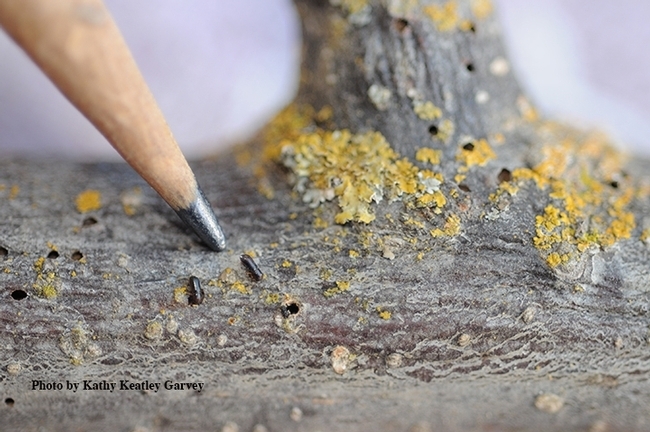
The walnut twig beetle, Pityophthorus juglandis, in association with a fungus, causes the thousand cankers disease. (Photo by Kathy Keatley Garvey)
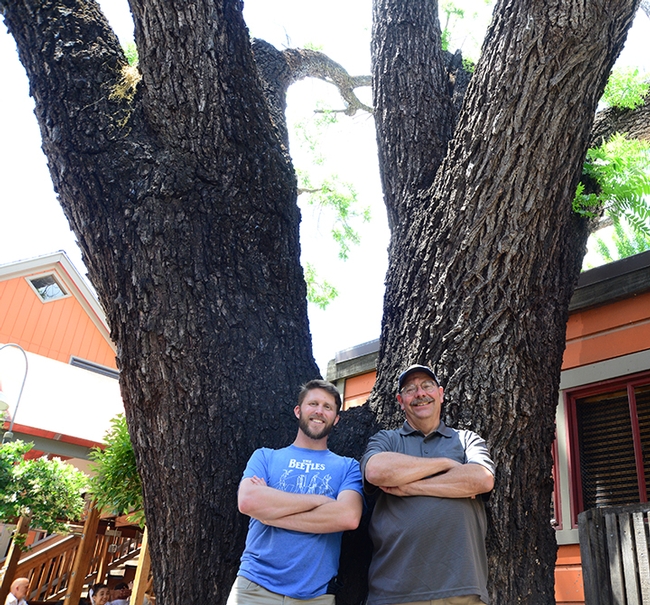
Forest entomologist Jackson Audley (left) with his mentor, the late Steve Seybold, in front of an infested tree in Davis, Calif. The walnut twig beetle, in association with a fungus, causes thousand cankers disease. (Photo by Kathy Keatley Garvey)
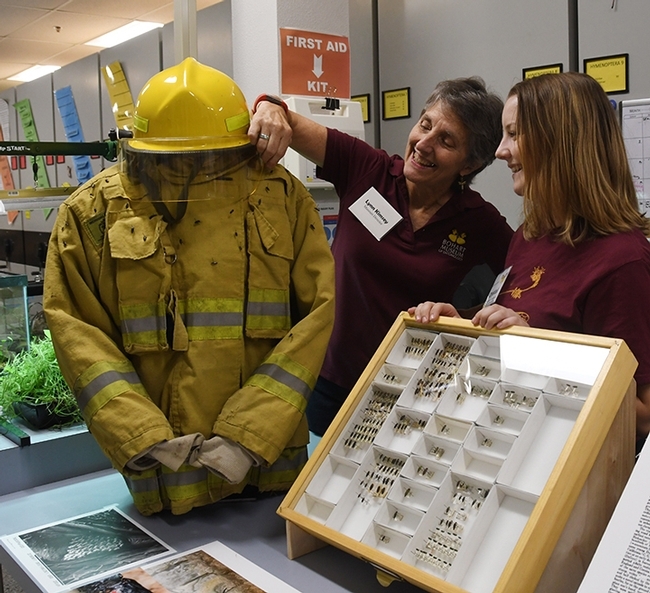
UC Davis doctoral student Crystal Homicz (right) participating in a forest entomology open house at the Bohart Museum of Entomology. With her is Professor Lynn Kimsey, director of the Bohart. (Photo by Kathy Keatley Garvey)
Forest Entomologist/Chemical Ecologist Steven Seybold: 1959-2019
We are all saddened by the death of noted forest entomologist and chemical ecologist Steven Jon Seybold, a lecturer and researcher with the UC Davis Department of Entomology and Nematology and a research entomologist with the Pacific Southwest Research...
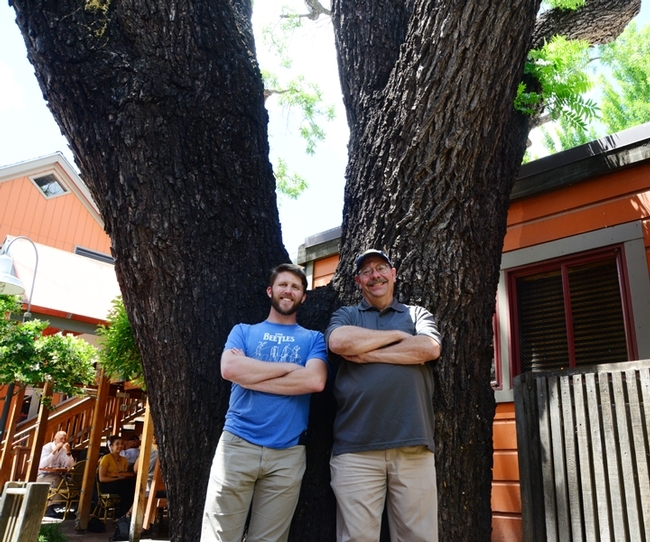
Forest entomologist and chemical ecologist Steve Seybold and doctoral student Jackson Audley by a downtown Davis tree with thousand cankers disease. (Photo by Kathy Keatley Garvey)
UC Davis Doctoral Student Jackson Audley: On the Road to Improve Forest Health
Forest health promises to take a turn for the better, thanks to forest entomologists like Jackson Audley, a doctoral student at the University of California, Davis. Audley just received the 2019 Western Forest Insect Work Conference (WFIWC) Memorial...
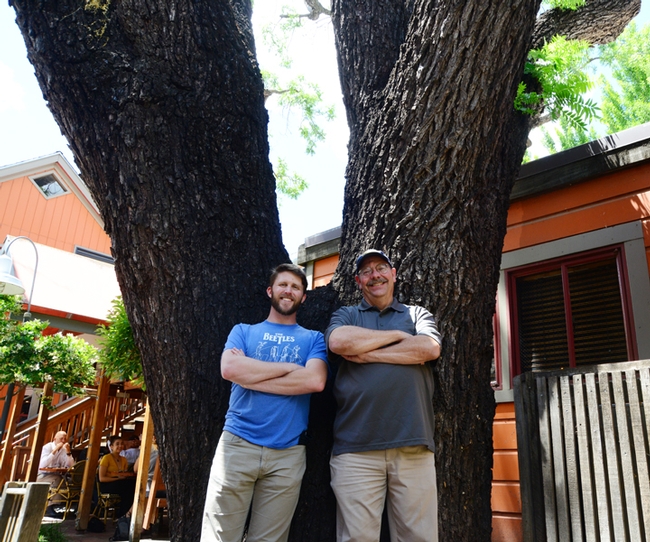
Jackson Audley (left) with major professor Steve Seybold in front of a dying black walnut tree on E St. in Davis. (Photo by Kathy Keatley Garvey)
A Sign of the Times: Why This Black Walnut Tree Is Dying
If you've ever walked into the courtyard on the 100 block of E Street in downtown Davis, Calif., you've probably noticed the massive black walnut tree near Sophia's Thai Bar and Kitchen. It's about 150 years old, 50 feet in height, and measures about...
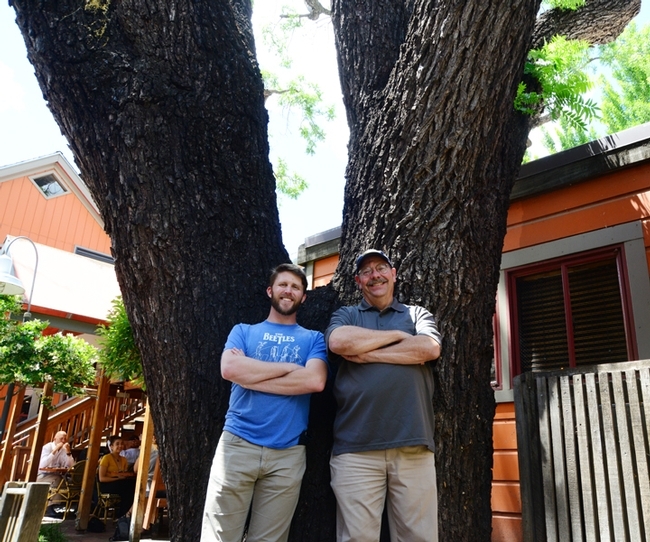
Forest entomologists Steve Seybold (right) and Jackson Audley stand by a 150-year-old black walnut tree on the 100 block of E Street. It is dying of thousand cankers disease. (Photo by Kathy Keatley Garvey)
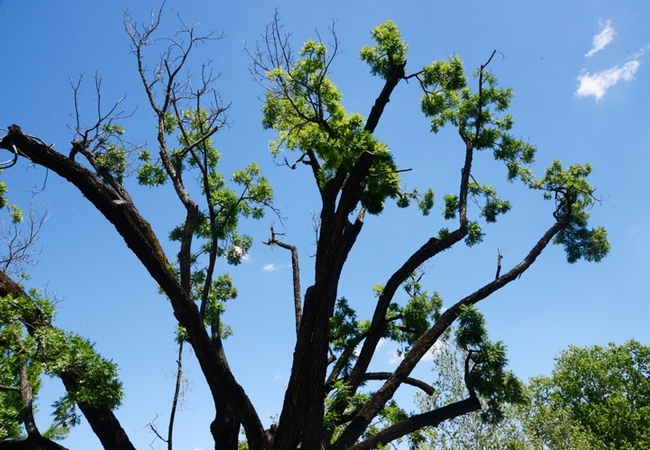
Walnut twig beetles tunnel into branches and trunks of walnut (Juglans) where they create galleries for mating and reproduction. In association with a canker producing fungus, Tthey cause a disease known as thousand cankers disease. This tree is in downtown Davis, Calif. (Photo by Kathy Keatley Garvey)
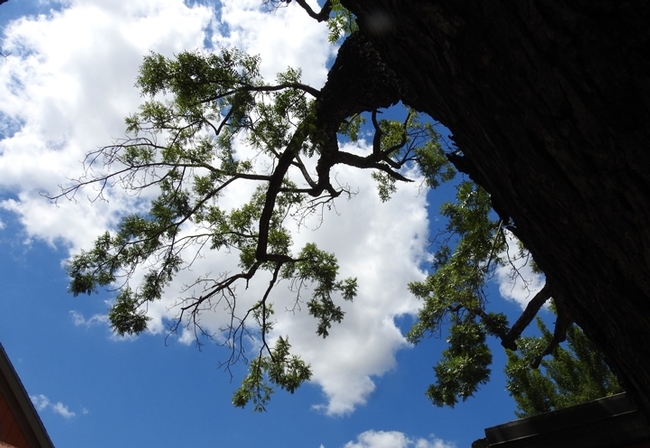
This massive, 150-year-old black walnut tree on the 100 block of E Street, Davis, is dying of thousand cankers disease. (Photo by Kathy Keatley Garvey)
Meet the 'Extreme Insects' Aug. 19 at Bohart Museum of Entomology Open House
Talk about extremes! Have you ever thought about how some insects have adapted to fire, ice, acid, hot water, salt and the desert? Have you ever seen an ambrosia beetle, a red turpentine beetle, an ice cricket, a brine fly or a sand wasp? You will if...
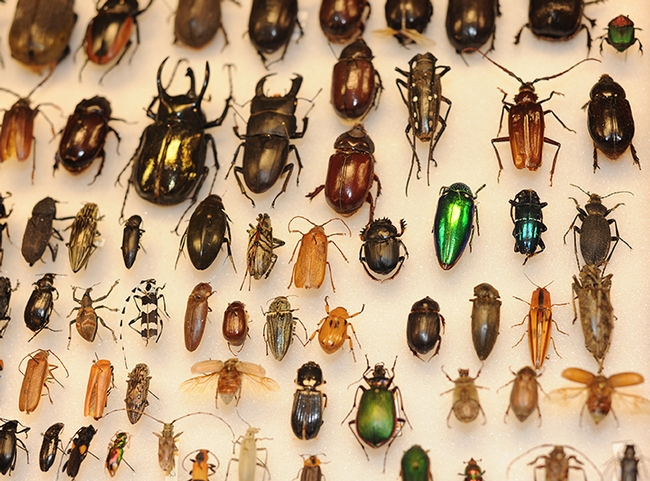
This is part of the beetle collection at the Bohart Museum of Entomology. (Photo by Kathy Keatley Garvey
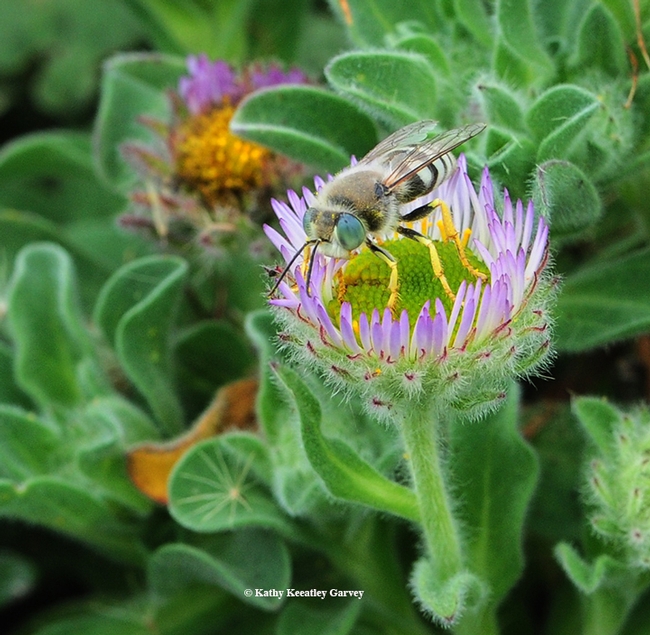
A sand wasp, Bembix americana, foraging on seaside daisies at Bodega Bay. (Photo by Kathy Keatley Garvey)

